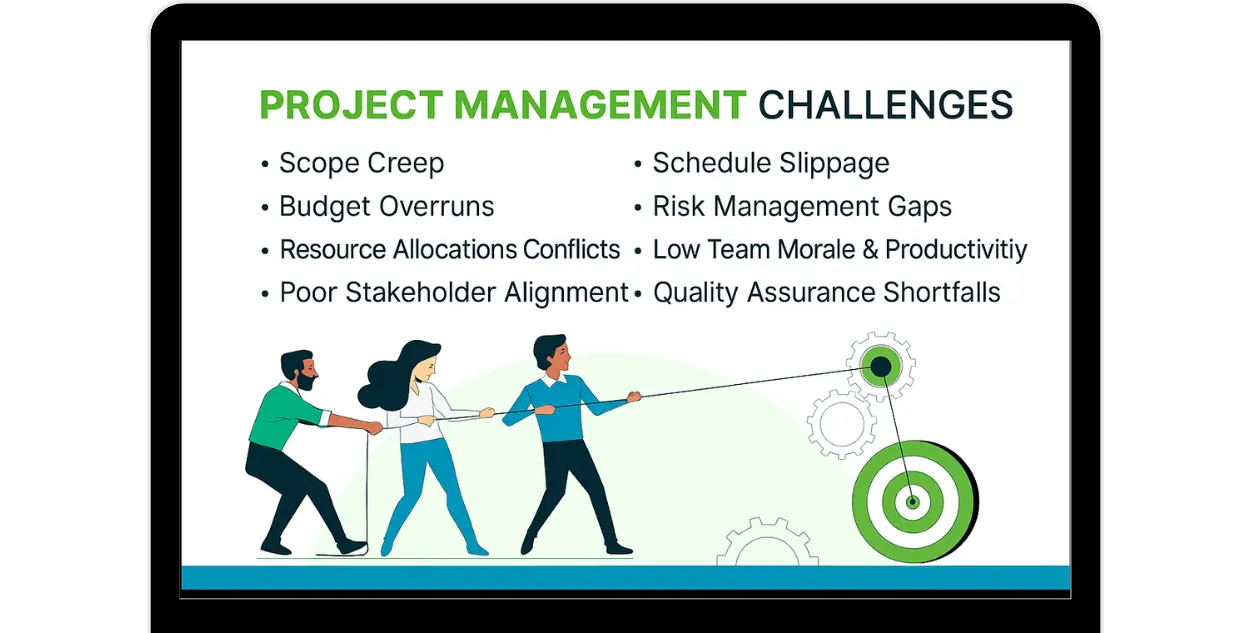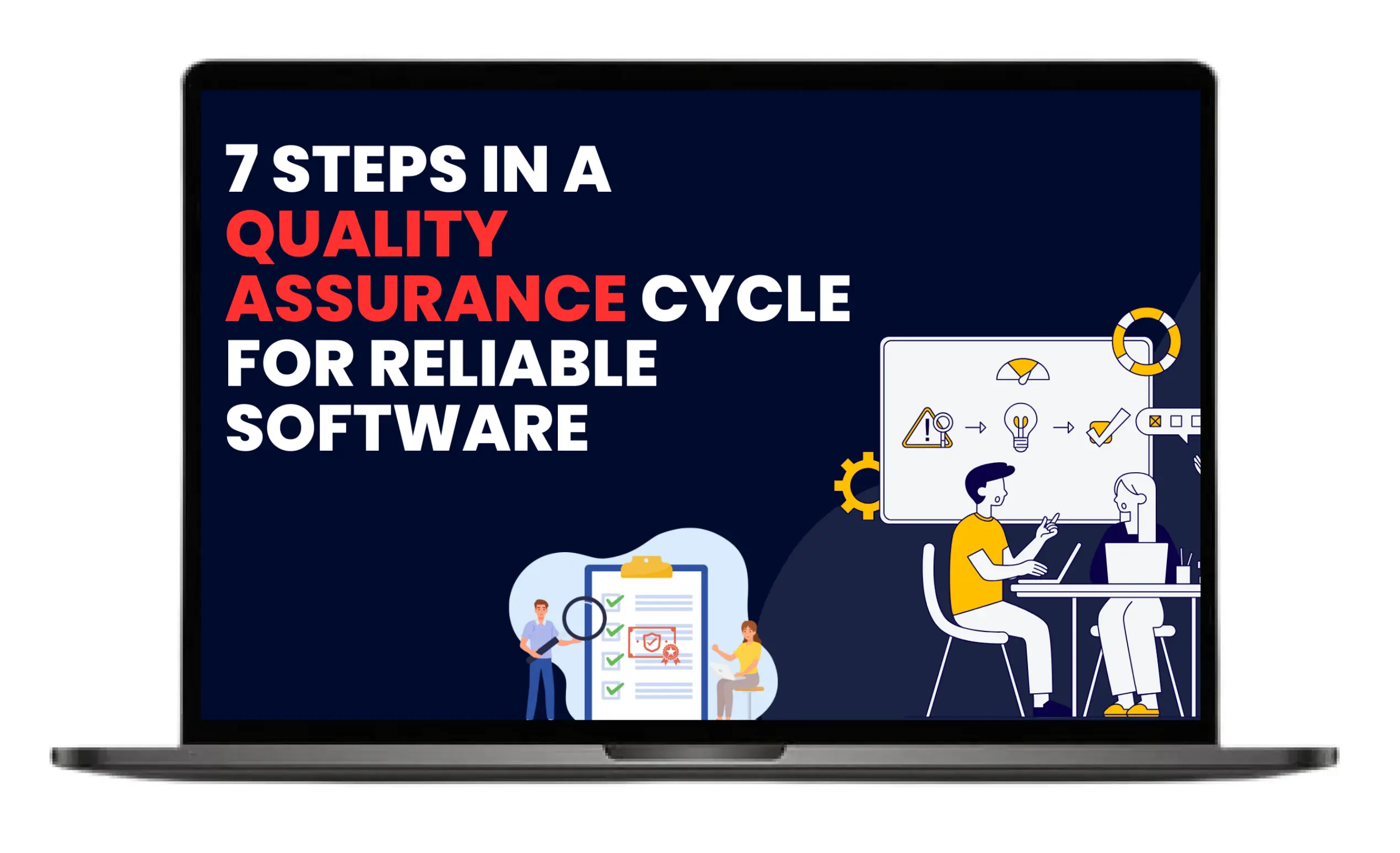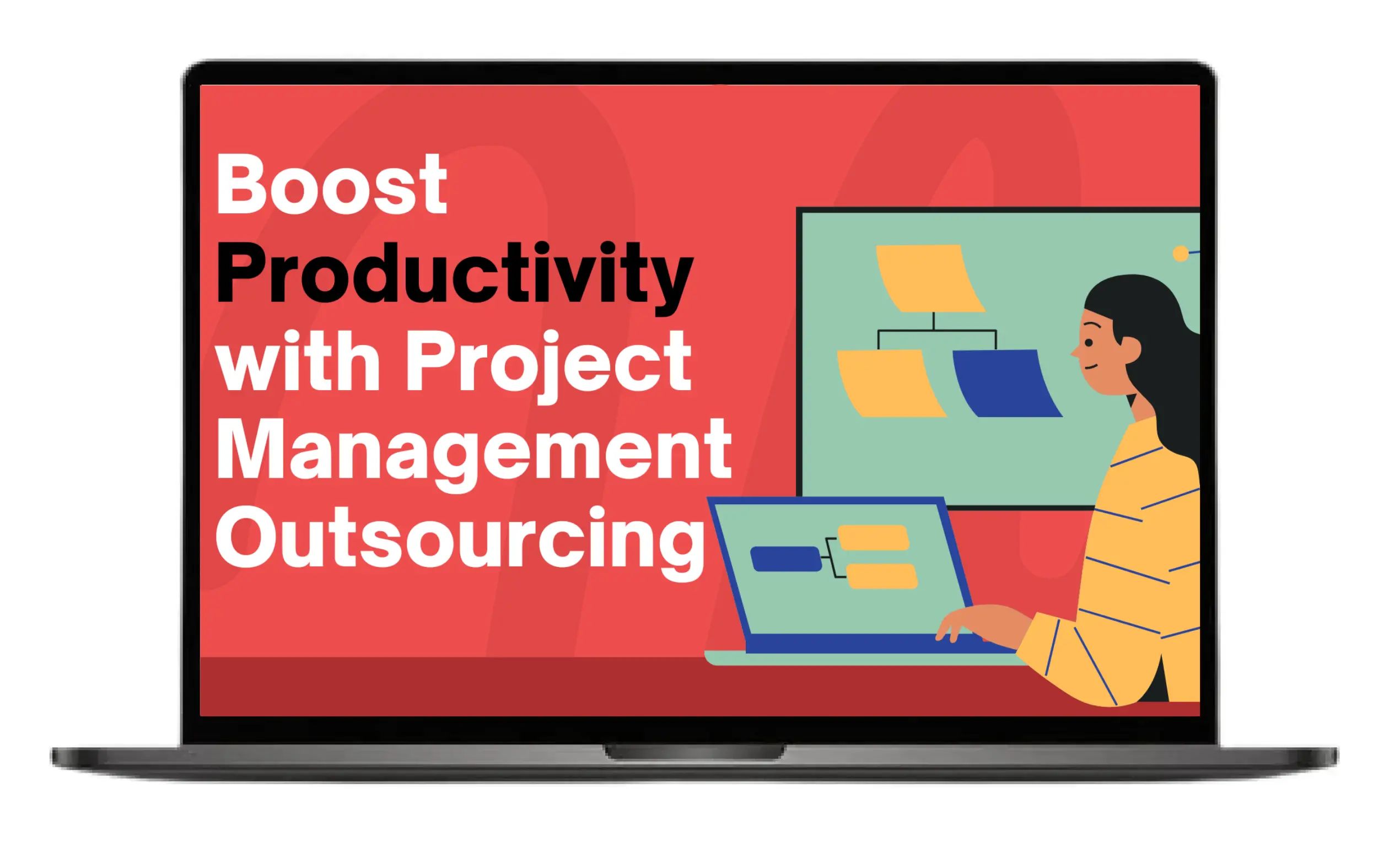
According to PMI, 71% of projects fail to meet their original objectives. Even the best planned projects can result in failures. It means every three out of four projects fail. It is due to issues in project management such as scope creep, budget issues, missed deadlines, and team burnout. These issues can be resolved by following simple steps. In this blog, we will explain 9 project management challenges and their solutions.
Challenge #1 Scope Creep
Starting a project without well-defined goals is like you are about to sail without a compass. You may travel fast but you will not reach your destination. The ambiguity in goal is the result of misplaced expectations, resource waste, and missed deliverables. In the absence of a clear project charter and requirements-gathering process, teams work on different tasks. This results in divergence from the main goal.
Solution
You must establish SMART objectives. These must be Specific, Measurable, Achievable, Relevant, and Time-bound. You must get stakeholder approval and document a clear scope statement. Additionally, create a structured change control procedure to assess, accept, or deny new requests for any changes in the project.
Challenge #2 – Budget Overruns
Projects can still go wrong even with well-defined objectives and a cohesive team. It happens when expenses exceed projected costs. A 30% budget overrun erodes credibility and may make it more difficult to get approval for subsequent projects. Budget overruns are the result of unrealistic early projections, unanticipated expenses like travel or licenses, and the belief that everything will go better.
Solution
You must set a precise cost baseline, monitor expenditures in real time, and improve estimates as the project moves forward. You should maintain project cost management by implementing a rigorous change control procedure. You must also keep informing stakeholders about reasonable costs.
Challenge #3 – Resource Allocation Conflicts
On paper, a project might appear flawless. However, you discover that your important team member is already preoccupied with other tasks. When teams assign tasks without verifying specific skills, it results in resource allocation conflicts.
Solution
You can use a basic heatmap to track workloads, match skills to roles to identify skill gaps, and adhere to the 70/20/10 rule. It means 70% for planned work, 20% for administrative tasks, and 10% for unforeseen problems. You must have a brief weekly meeting with all project leads to address overloads. You must maintain a small pool of members for last-minute emergencies. In this manner, projects remain on schedule and nobody is overworked.
Challenge #4 – Poor Stakeholder Alignment
When important stakeholders' expectations diverge, projects lose momentum and value. This frequently occurs because key decision-makers, gatekeepers, and influencers are never properly identified. This allows their needs to remain unspoken until the end of the project. Furthermore, the project team may never receive clear communication about changing business priorities.
Solution
You must map all stakeholders such as key decision-makers to developers. You should note their preferred channels of communication. You must draft a straightforward, visually appealing one-page project charter. This charter should outline objectives, success metrics, deadlines, and what is and is not within scope. This will ensure that everyone takes responsibility for the project. To ensure that no one is overlooked, use a RACI chart with a predetermined communication schedule.
Challenge #5 – Ineffective Communication
Ineffective communication can undermine trust, cause confusion, and delay work. This frequently occurs when information is conveyed through multiple channels. These channels can be chats, emails, and casual conversations. This makes it difficult for anyone to locate the most recent information. Additionally, important information is ignored by pointless updates.
Solution
To solve this issue, you can make a concise one-page communication plan. It should outline who needs what information, how, and when. You must organize brief daily check-ins to discuss issues and progress. You should store all important updates online so that everyone can access the most recent information. You must ensure that the project team, technical staff, and executives receive the appropriate amount of detail. For this, you can use distinct update formats for each group.

Challenge #6 – Schedule Slippage
It happens when teams provide excessively optimistic time estimates. This disregards actual delays like meetings, sick days, or rework. Additionally, teams often neglect hidden dependencies, or tasks. These tasks appear as independent. But, these tasks actually depend on the same person or resource. Poorly managed buffers, where additional time is dispersed throughout the project and covertly consumed by additional tasks, are another frequent cause.
Solution
Maintaining a clear, living critical path will help everyone understand which tasks are most crucial to meeting deadlines. At the end of the timeline, maintain a single, targeted project buffer and guard against scope creep. Every two weeks, reestimate the work based on real progress rather than wishful thinking, and communicate updates honestly. Hold brief meetings to determine whether to change the scope or expedite work, and use alerts to identify delays on important tasks right away. Last but not least, assess possible hazards for critical tasks every day to identify issues before they result in more significant delays.
Challenge #7– Risk Management Gaps
It happens when risk planning ignores more significant external issues. These issues can be new regulations, shifts in the market, or competitor actions. Risk planning only addresses apparent threats like delays or outages, projects suffer. This will result in risk management gaps.
Risks are frequently noted once and then forgotten, which leaves teams unprepared for shifting circumstances. Without precise estimates of each risk's likelihood and potential harm, teams may make guesses about priorities. This can lead to overlooking the most serious dangers.
Solution
To address this, examine risks from all perspectives. You must look at both internal and external risks, such as politics, economics, and technology. This can give you a broader viewpoint to find threats you may not have considered.
You must regularly review risks and update scores as circumstances change. You can also set up automated triggers to initiate specific actions as soon as a risk reaches a danger point.
Challenge #8 – Low Team Morale & Productivity
Teams become demotivated when they are unable to see the impact of their work. Additionally, sometimes they work nonstop for extended periods of time and receive less feedback or recognition. This results in a decrease in productivity, burnout and low team morale.
Solution
To address this, make daily progress visible so that everyone can see their influence. Workloads should be balanced to allow for emergencies and learning in addition to continuous delivery. You must make quick adjustments when morale declines. You should also check in once a week to see what is working and what is consuming energy. You must incorporate enjoyment and acknowledgment, such as friendly contests, points, and prizes. This will boost the morale of the team and increase their productivity.
Challenge #9 – Quality Assurance Shortfalls
It happens when you delay testing and do not share or track the significant quality metrics. It also occurs when you say a particular task is "done". But this means different things to different people which results in a decrease in quality. It also leads to bugs slipping, dissatisfied customers, and later higher fix costs.
Solution
The solution is to establish a single, unambiguous "done" checklist. This will ensure that everyone adheres to this checklist. To ensure that bugs are found before release, you must conduct tests in advance. Every time you update a code, you should use automated testing to verify it. Every sprint should include additional time for hands-on testing of challenging situations. You should keep track of important quality metrics and share them widely. If the quality begins to decline, you must stop using new features.
Conclusion
Project management can be a very complex activity because it is filled with many challenges. You may encounter several challenges during the project. But by using proper approaches, one can easily eliminate all of them and reach the established goals. You should focus on goal definition, communication, risk management, and stakeholders. If you approach each of these challenges proactively, you can perform better.
FAQs
1. How to overcome barriers in project management?
To overcome barriers in project management, clear communication with the team and stakeholders is essential. You must set realistic goals and stay adaptable. Regular check-ins and addressing problems early can prevent issues from escalating.
2. How do you overcome project constraints?
To overcome project constraints, start by clearly identifying the limitations. You must highlight time, budget, or resources. You must prioritize tasks, reallocate resources where possible.
3. How do you avoid and overcome project delays?
To avoid project delays, start by setting realistic timelines. You must break the project into smaller tasks, and closely monitor progress. You should also address potential risks early by identifying bottlenecks or dependencies in advance.



















